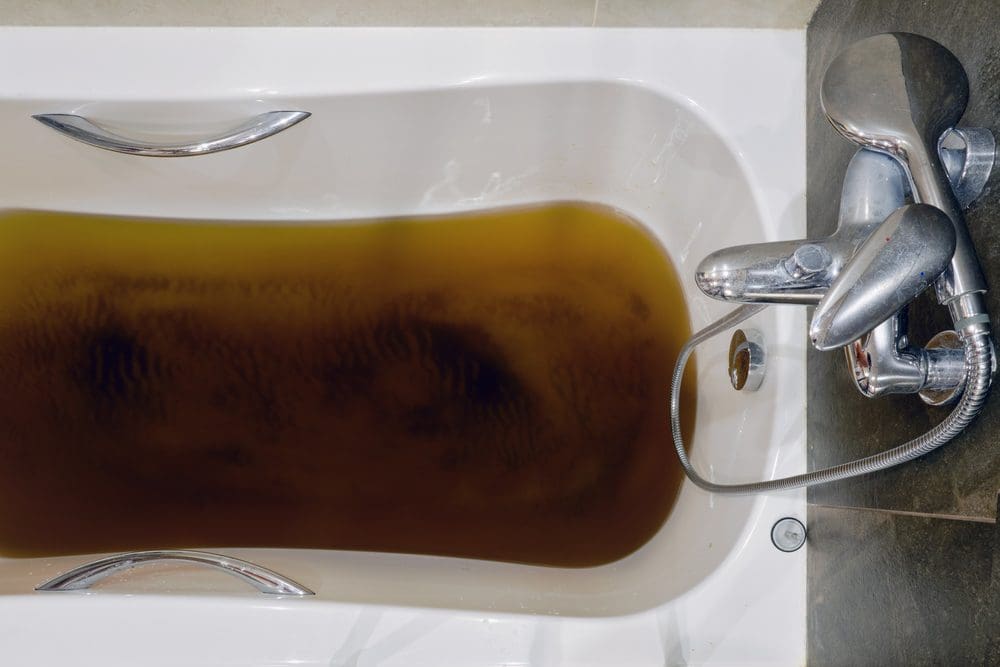Almost everyone will have their own unique rationale when it comes to What to Do if Sewage Starts Coming Up Through Your Bathtub.

Sewer backup in the bathtub can be an upsetting and unhygienic issue for any type of homeowner. Not just is it inconvenient, but it likewise positions severe health and wellness risks and shows underlying concerns with the plumbing system. Comprehending why sewage is turning up through the bath tub is important for taking ideal activity to address the problem properly.
Intro to the Issue
Common Factors for Sewer Back-up
Clogs in the Drain Line
One of one of the most typical sources of sewer backup is an obstruction in the sewage system line. This can happen due to the build-up of particles, grease, or international things in the pipelines, stopping correct flow and causing sewage to support into your bath tub.
Tree Root Intrusion
Tree roots seeking moisture and nutrients can penetrate sewage system lines through tiny fractures or joints. With time, these origins can grow and increase, creating significant damage to the pipelines and leading to sewage back-up issues.
Comprehending the Trouble
When sewage draws back up into the bathtub, it's a clear sign of a trouble with the water drainage system. The wastewater that needs to be moving far from your home is instead discovering its way back right into your home, which can lead to considerable damages and carcinogen.
Potential Causes
Numerous factors can contribute to sewage backup in the tub. From clogs in the drain line to concerns with the plumbing framework, identifying the origin is crucial for discovering a solution.
Aging Infrastructure
Older homes may have obsoleted plumbing systems that are more susceptible to rust, splits, and deterioration. As pipelines age, they come to be much more vulnerable to leakages and obstructions, increasing the possibility of sewage back-up occurrences.
Heavy Rainfall or Flooding
During periods of heavy rainfall or flooding, the sewer system might end up being overloaded with excess water, creating backups and overflows. This can result in sewer supporting into bath tubs and other fixtures inside the home.
Signs of Sewage Backup
Foul Odors
Undesirable smells rising from drains or fixtures, specifically in the restroom, might suggest sewer backup issues. These odors are often strong and relentless, signifying a problem that needs prompt interest.
Slow Draining Fixtures
Bath tubs, sinks, and toilets that drain slowly or otherwise in all could be experiencing sewer backup. If several fixtures are influenced simultaneously, it's likely that the issue stems from a typical point, such as the major sewage system line.
Gurgling Sounds
Odd gurgling or gurgling noises originating from drains when water is running elsewhere in the house are indicative of air entraped in the plumbing system. This air build-up can result from sewer backup and must be checked out quickly.
Wellness Risks Connected With Sewer Back-up
Contamination of Water System
Sewage back-up can contaminate the water in your house, positioning a major wellness risk to you and your family. Direct exposure to polluted water can bring about gastrointestinal concerns, skin infections, and various other health problems.
Mold Growth
Wetness from sewage backup can create optimal problems for mold development in your house. Mold and mildew spores can intensify respiratory troubles and create allergies in delicate people, making prompt cleanup important.
Spread of Illness
Sewage consists of dangerous bacteria, viruses, and bloodsuckers that can create a variety of illness, including liver disease, cholera, and gastroenteritis. Entering contact with sewer or polluted surfaces puts you at risk of infection.
Cleaning Up After Sewage Back-up
Sanitation Procedures
Extensively disinfect and sterilize affected areas after sewer backup to get rid of dangerous microorganisms and avoid mold and mildew development. Usage appropriate cleansing products and safety gear to ensure safe and reliable cleanup.
Restoration of Affected Areas
Fix any kind of damage to floor covering, walls, or components brought on by sewer back-up. Relying on the degree of the damages, you might need to replace carpets, drywall, or other materials to recover your home to its pre-loss condition.
Immediate Actions to Take
Shutting Off Water Supply
In case of sewage back-up, it's essential to shut off the supply of water to stop additional contamination and damages. Locate the primary water shutoff valve in your house and shut it off till the issue can be solved.
Contacting an Expert Plumber
Handling sewage backup is not a do it yourself task. Call a licensed plumber with experience in managing sewage-related problems to analyze the circumstance and execute required repair work or cleanups.
Avoiding Contact with Contaminated Water
Until the sewer backup is resolved, avoid contact with contaminated water to stop the spread of microorganisms and virus. Use protective equipment if you need to remain in the afflicted area and wash your hands completely later.
Safety nets
Regular Upkeep of Drain Lines
Set up routine assessments and upkeep of your sewer lines to recognize and resolve potential issues prior to they escalate into significant troubles. This can include clearing out particles, examining for tree root breach, and fixing any type of damaged pipes.
Setting Up Backwater Shutoffs
Take into consideration mounting bayou shutoffs in your plumbing system to avoid sewer from flowing back right into your home throughout durations of heavy rainfall or flooding. These valves instantly close when water starts backing up, protecting your building from contamination.
Appropriate Disposal of Household Waste
Avoid flushing anything aside from toilet paper and human waste down the toilet to avoid blockages and blockages in the sewage system line. Dispose of grease, oil, and various other household chemicals properly to reduce the risk of plumbing issues.
Why Is Water Backing Up in My Bathtub When I Flush My Toilet?
What to do about a sewer line clog
First, don’t bother with plunging. No amount of plunging will dislodge the clog in a sewer line. The clog is too far away. Plungers are for clogs in the toilet itself, not the sewer line. Plus, the most likely causes of a sewer clog are:
Tree roots Flushed toys or feminine products Grease buildup Those items don’t move easily. And in the case of tree roots, the roots need to be cut out of the pipe and the pipe will need to be repaired.
You’ll need a closet auger. A closet auger is a type of plumber’s snake with a protective cover to keep from scratching the delicate porcelain toilet. If the clog is further down, you may need to remove the toilet or use one of your cleanouts to get to the clog.
We also recommend doing a video inspection of the drain to ensure that the cause of the clog has been completely removed. Otherwise, you could have the same problem again in a few days or weeks.
https://mspplumbingheatingair.com/blog/why-is-water-backing-up-in-my-bathtub-when-i-flush-my-toilet

We were made aware of that report on Water Coming up Bathtub Drain through a buddy on our other web page. Are you aware of another person who is excited about ? Do not hesitate to promote it. Thanks a lot for your time. Don't forget to come by our blog back soon.
Visit The Following Page